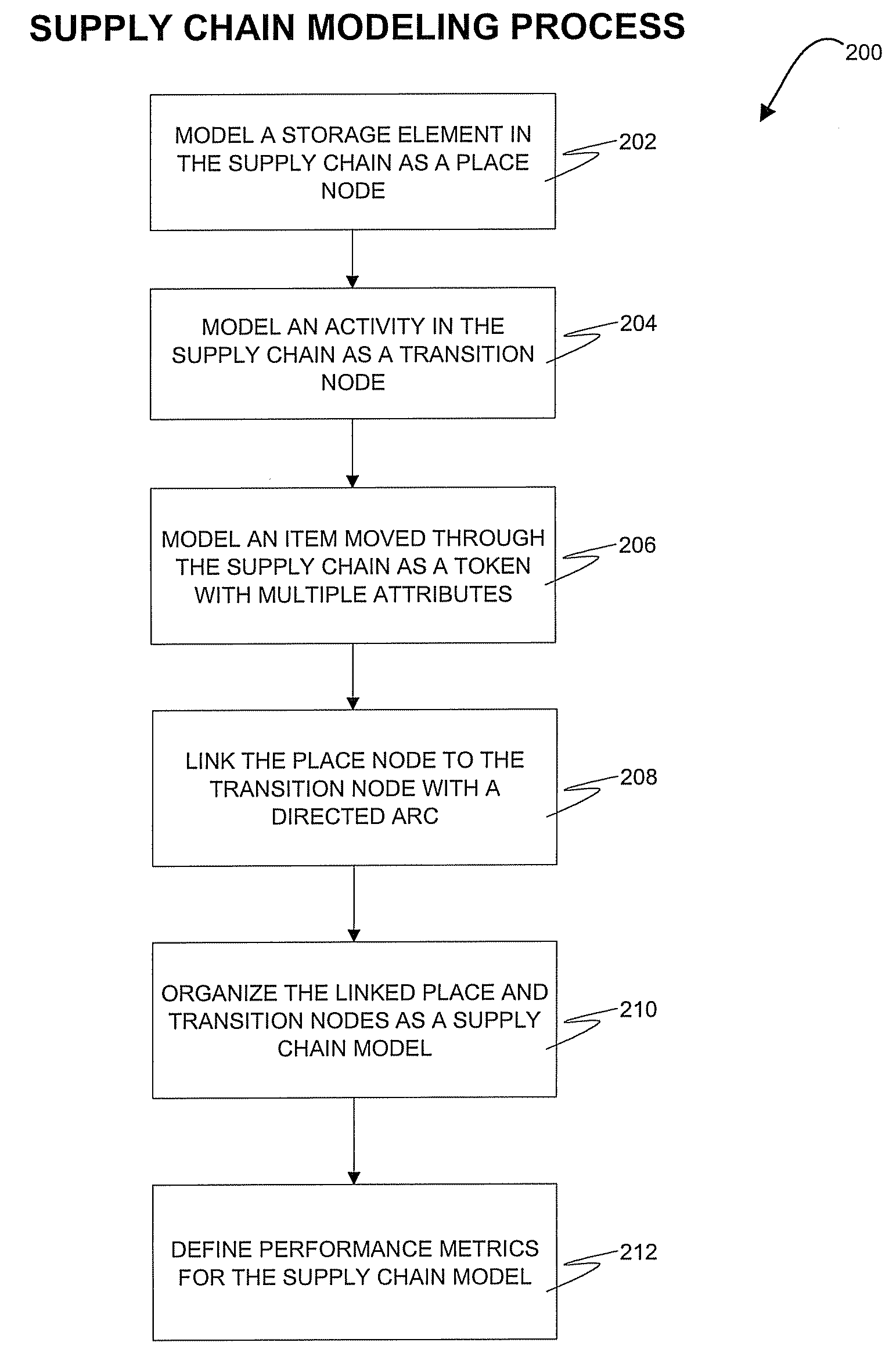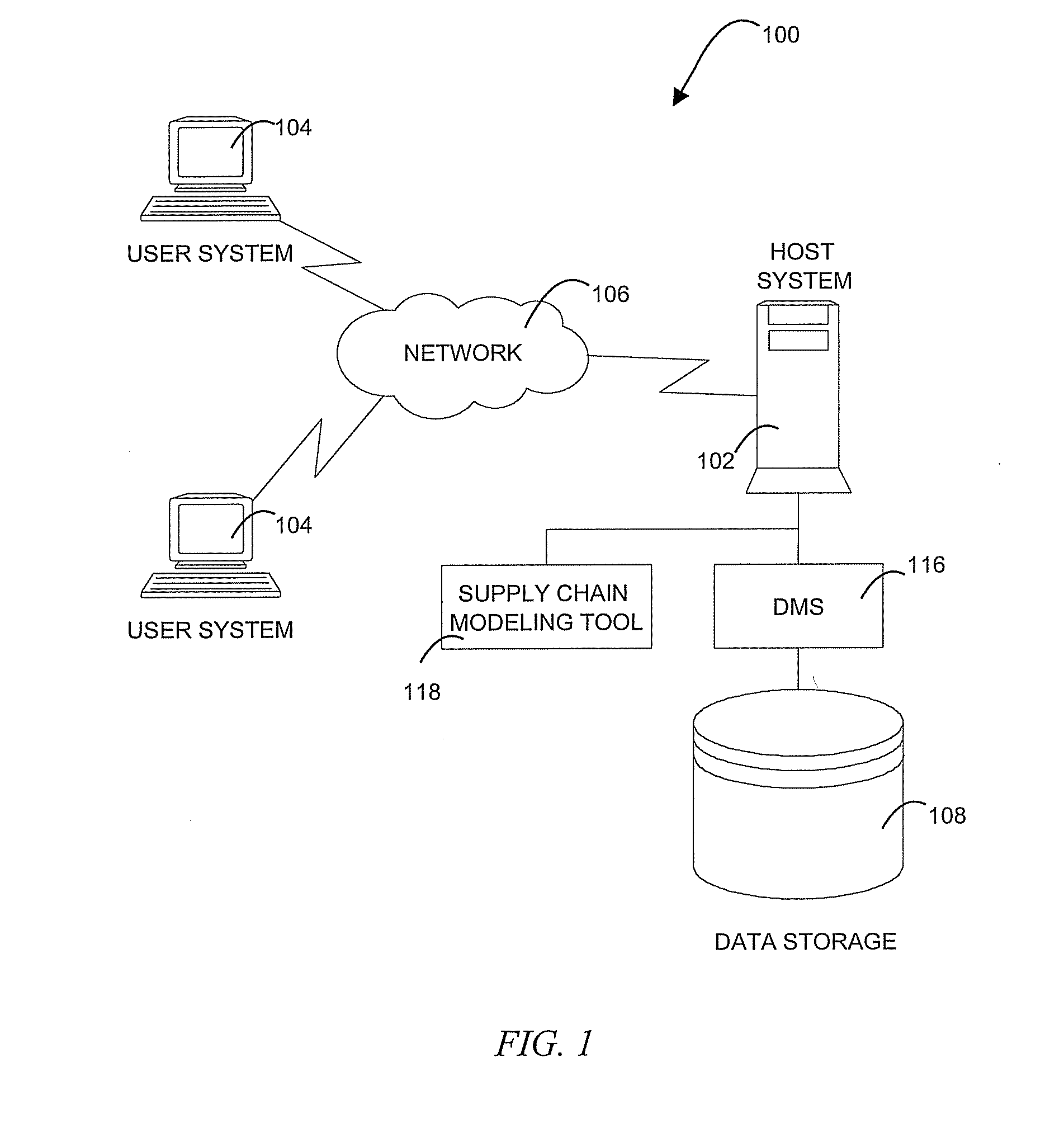Modeling a supply chain
a supply chain and model technology, applied in the field of supply chain, can solve the problems of adding further complexity to the simulation model, difficult to accurately model the supply chain, and general limitation of simulation tools to accurately model the sophisticated operational details of the supply chain, so as to facilitate the organization of linked items, facilitate the definition of performance metrics, and facilitate the effect of modeling an item
- Summary
- Abstract
- Description
- Claims
- Application Information
AI Technical Summary
Benefits of technology
Problems solved by technology
Method used
Image
Examples
Embodiment Construction
[0015]Exemplary embodiments, as shown and described by the various figures and the accompanying text, provide methods, systems and computer program products for hierarchical and multi-attribute modeling of a supply chain. The modeling and simulation of complex business operations in a supply chain using a multi-attribute and hierarchical approach is further described herein. A Petri net (PN), also known as a place / transition net, provides a mathematical and graphical basis for representing a structure of a distributed system. A PN typically includes place nodes, transition nodes, and directed arcs. These PN elements are also referred to more simply as places, transitions, and arcs. Exemplary embodiments utilize and extend PNs to perform the processing described herein.
[0016]A place node acts as a storage element (e.g., a buffer) and may contain any number of tokens. A place node may also maintain a token sequence, such as a first-in-first-out (FIFO) buffer (e.g., a conveyor belt). A...
PUM
 Login to View More
Login to View More Abstract
Description
Claims
Application Information
 Login to View More
Login to View More - R&D
- Intellectual Property
- Life Sciences
- Materials
- Tech Scout
- Unparalleled Data Quality
- Higher Quality Content
- 60% Fewer Hallucinations
Browse by: Latest US Patents, China's latest patents, Technical Efficacy Thesaurus, Application Domain, Technology Topic, Popular Technical Reports.
© 2025 PatSnap. All rights reserved.Legal|Privacy policy|Modern Slavery Act Transparency Statement|Sitemap|About US| Contact US: help@patsnap.com



